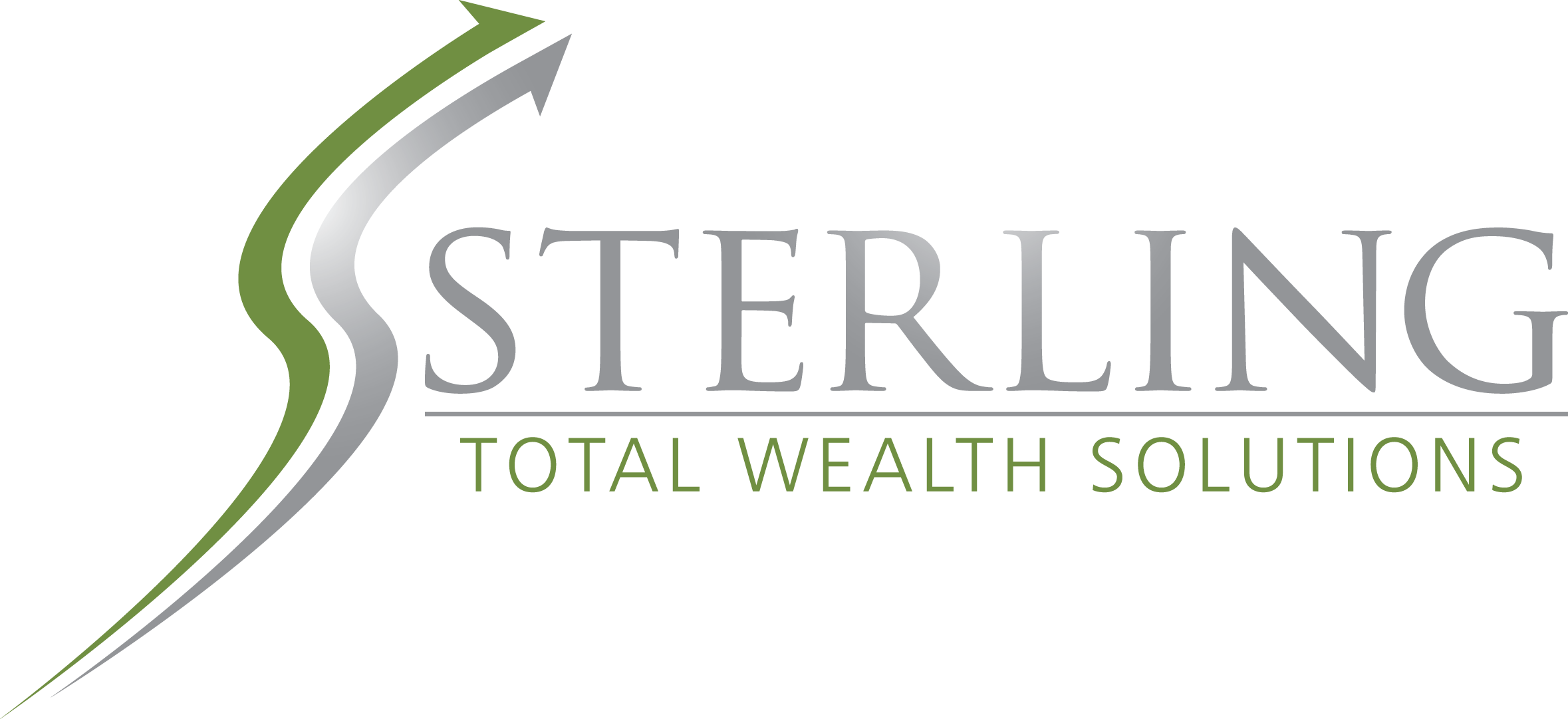In this month’s recap: Stocks posted solid gains due to improving economic conditions and widening vaccination programs. However, tech and high-growth stocks played a limited role in the rally.
Monthly Economic Update
Monthly Economic Update | Presented by Sterling Total Wealth Solutions | April 2021
U.S. Markets
Improved economic conditions and broadened vaccine programs ignited a broad stock market rally, though rising treasury yields dragged on technology and high-growth stocks.
The Dow Jones Industrial Average led, picking up 6.62 percent. The Standard & Poor’s 500 Index rose 4.24 percent while the tech-heavy Nasdaq Composite added 0.41 percent.1
Bonds Take Center Stage
The month began strong, thanks to a retreat in Treasury bond yields, solid economic reports, and the approval of another vaccine.
However, enthusiasm faded when yields climbed higher following Federal Reserve Chair Jerome Powell’s belief that inflationary pressures will be felt in the future. When yields leveled off, stocks resumed their advance, aided by the signing of the $1.9 trillion stimulus bill into law and another round of upbeat economic reports.2
Rotation to Cyclicals
Technology stocks and high-growth stocks played a limited role in the March rally as investors rotated their portfolios into other sectors, including cyclical names. The Nasdaq Composite early in the month flirted with a correction, defined as a 10 percent or greater pullback from a recent high.
Fed’s Guidance
Traders eagerly awaited the two-day Federal Open Market Committee meeting, which ended on March 17. The Fed affirmed its monetary policy, which helped push the Dow Industrials and S&P 500 to record closing highs. Nevertheless, characteristic of the month’s trading, markets reversed themselves the next day as a pickup in Treasury yields sent technology and other high-growth stocks lower once again. 3
Despite the choppiness of the closing days of trading, stocks ended on a strong note to cap an otherwise good month for investors.
Sector Scorecard
Every industry sector ended higher in March, with gains in Communication Services (+2.04 percent), Consumer Discretionary (+3.49 percent), Consumer Staples (+8.26 percent), Energy (+2.60 percent), Financials (+6.19 percent), Health Care (+3.46 percent), Industrials (+9.01 percent), Materials (+7.67 percent), Real Estate (+6.19 percent), Technology (+0.03 percent), and Utilities (+8.93 percent).4
What Investors May Be Talking About in April
A new earnings season is fast approaching, and investors will be poring over financial statements to gauge business prospects.
Thanks to the fiscal stimulus, vaccinations, and more reopenings, many economists believe that growth will accelerate at the macro level. Economic reports, such as retail sales and industrial production, will help economists measure the momentum.
However, inflation numbers will continue to be closely scrutinized. Any pickup could rattle investor confidence in the Fed’s policy to keep the short-term rates near zero—a central pillar supporting the financial markets (see “The Fed” section below).
World Markets
Overseas markets posted solid returns in March, as improving sentiment regarding an economic recovery outweighed further lockdowns in Europe. For the month, the MSCI-EAFE Index rose 2.18 percent.5
The major European markets ended higher. Germany led, picking up 8.86 percent. France rose 6.38 percent, and the UK tacked on 3.55 percent.6
The returns on Pacific Rim stocks were mixed. Australia gained 1.76 percent and Japan added 0.73 percent, but Hang Seng slipped -2.08 percent.7
Indicators
Gross Domestic Product: The final read for the fourth quarter GDP growth was 4.3 percent, up from the previous estimate of 4.1 percent.8
Employment: Led by an acceleration in hiring by the leisure and hospitality industry, employers added 379,000 new jobs in February. This beat consensus forecasts by a wide margin and lowered the unemployment rate to 6.2 percent.9
Retail Sales: Retail sales fell by 3.0 percent in February, hampered by the month’s severe winter weather. January retail sales figures were revised upward, from 5.3 percent to 7.6 percent.10
Industrial Production: Industrial output declined 2.2 percent. Industrial production was dragged lower by a drop in manufacturing production, which was impacted by February’s inclement weather.11
Housing: Housing starts dropped an unexpected 10.3 percent, as severe weather and labor constraints affected activity.12
Existing home sales declined 6.6 percent amid a tightening supply of homes on the market. Despite the drop from January levels, sales in February exceeded those in the same period in 2020 by 9.1 percent.13
Sales of new homes fell 18.2 percent, owing to inclement weather and a tight supply.14
Consumer Price Index: Prices of consumer goods rose by 0.4 percent in February, as gasoline prices jumped 6.4 percent. Core inflation, which excludes the more volatile food and energy sectors, was up 0.1 percent last month.15
Durable Goods Orders: Durable goods orders fell 1.1 percent, the first decline in 10 months.16
TIP OF THE MONTH

If you’re buying a house, strive to put at least 20% down so you can avoid the requirement for private mortgage insurance (PMI).
The Fed
The message coming out of March Federal Open Market Committee (FOMC) meeting remained consistent: The Fed would maintain its near-zero interest rate policy and monthly bond purchasing program.
Fed officials stated that they expect some pickup in inflation this year but price increases would be transitory. They also said any changes to monetary policy would be communicated well in advance of a policy change.17
“Overall inflation remains below our 2 percent longer-run objective,” Fed Chair Jerome Powell said in prepared remarks. “Over the next few months, 12-month measures of inflation will move up as the very low readings from March and April of last year fall out of the calculation.”
“Beyond these base effects, we could also see upward pressure on prices if spending rebounds quickly as the economy continues to reopen, particularly if supply bottlenecks limit how quickly production can respond in the near term,” he continued.
“However, these one-time increases in prices are likely to have only transient effects on inflation. The median inflation projection of FOMC participants is 2.4 percent this year and declines to 2 percent next year before moving back up by the end of 2023.”18
|
MARKET INDEX |
Y-T-D CHANGE |
March 2021 |
|
DJIA |
7.76% |
6.62% |
|
NASDAQ |
2.78% |
0.41% |
|
S&P 500 |
5.77% |
4.24% |
|
|
||
|
BOND YIELD |
Y-T-D |
March 2021 |
|
10 YR TREASURY |
0.83% |
1.75% |
Sources: Yahoo Finance, March 31, 2021
The market indexes discussed are unmanaged and generally considered representative of their respective markets. Individuals cannot directly invest in unmanaged indexes. Past performance does not guarantee future results. U.S. Treasury Notes are guaranteed by the federal government as to the timely payment of principal and interest. However, if you sell a Treasury Note prior to maturity, it may be worth more or less than the original price paid.
QUOTE OF THE MONTH

“Don’t let yesterday take up too much of today.”
WILL ROGERS
THE MONTHLY RIDDLE

A rope ladder hangs over the side of a docked ship and dips into the water. The rungs are 15.75″apart, all equally distanced. At low tide, two of the ladder’s rungs are underwater. At high tide, which is exactly 3.5’above low tide, how many rungs will be underwater?
LAST MONTH’S RIDDLE: Some months have 30 days, others 31. How many have 28?
ANSWER: All of them – all months have 28 days or more.
Securities offered through Registered Representatives of Cambridge Investment Research, Inc., a Broker/Dealer, Member FINRA/SIPC. Advisory services offered through Cambridge Investment Research Advisors, Inc., a Registered Investment Advisor. Sterling Total Wealth Solutions and Cambridge are not affiliated.
To learn more about Sterling Total Wealth Solutions, visit us on the web at www.sterlingtotalwealthsolutions.com
Know someone who could use information like this? Please feel free send us their contact information via phone or email. (Don’t worry – we’ll request their permission before adding them to our mailing list.)
This material was prepared by MarketingPro, Inc., and does not necessarily represent the views of the presenting party, nor their affiliates. The information herein has been derived from sources believed to be accurate. Please note – investing involves risk, and past performance is no guarantee of future results. Investments will fluctuate and when redeemed may be worth more or less than when originally invested. This information should not be construed as investment, tax or legal advice and may not be relied on for the purpose of avoiding any Federal tax penalty. This is neither a solicitation nor recommendation to purchase or sell any investment or insurance product or service, and should not be relied upon as such. All market indices discussed are unmanaged and are not illustrative of any particular investment. Indices do not incur management fees, costs, or expenses. Investors cannot invest directly in indices. All economic and performance data is historical and not indicative of future results. The Dow Jones Industrial Average is a price-weighted index of 30 actively traded blue-chip stocks. The NASDAQ Composite Index is a market-weighted index of all over-the-counter common stocks traded on the National Association of Securities Dealers Automated Quotation System. The Standard & Poor’s 500 (S&P 500) is a market-cap weighted index composed of the common stocks of 500 leading companies in leading industries of the U.S. economy. The Russell 2000 Index measures the performance of the small-cap segment of the U.S. equity universe. The CBOE Volatility Index® (VIX®) is a key measure of market expectations of near-term volatility conveyed by S&P 500 stock index option prices. NYSE Group, Inc. (NYSE:NYX) operates two securities exchanges: the New York Stock Exchange (the “NYSE”) and NYSE Arca (formerly known as the Archipelago Exchange, or ArcaEx®, and the Pacific Exchange). NYSE Group is a leading provider of securities listing, trading and market data products and services. The New York Mercantile Exchange, Inc. (NYMEX) is the world’s largest physical commodity futures exchange and the preeminent trading forum for energy and precious metals, with trading conducted through two divisions – the NYMEX Division, home to the energy, platinum, and palladium markets, and the COMEX Division, on which all other metals trade. The SSE Composite Index is an index of all stocks (A shares and B shares) that are traded at the Shanghai Stock Exchange. The CAC-40 Index is a narrow-based, modified capitalization-weighted index of 40 companies listed on the Paris Bourse. The FTSEurofirst 300 Index comprises the 300 largest companies ranked by market capitalisation in the FTSE Developed Europe Index. The FTSE 100 Index is a share index of the 100 companies listed on the London Stock Exchange with the highest market capitalization. Established in January 1980, the All Ordinaries is the oldest index of shares in Australia. It is made up of the share prices for 500 of the largest companies listed on the Australian Securities Exchange. The S&P/TSX Composite Index is an index of the stock (equity) prices of the largest companies on the Toronto Stock Exchange (TSX) as measured by market capitalization. The Hang Seng Index is a free float-adjusted market capitalization-weighted stock market index that is the main indicator of the overall market performance in Hong Kong. The FTSE TWSE Taiwan 50 Index is a capitalization-weighted index of stocks comprises 50 companies listed on the Taiwan Stock Exchange developed by Taiwan Stock Exchange in collaboration with FTSE. The MSCI World Index is a free-float weighted equity index that includes developed world markets and does not include emerging markets. The Mexican Stock Exchange, commonly known as Mexican Bolsa, Mexbol, or BMV, is the only stock exchange in Mexico. The U.S. Dollar Index measures the performance of the U.S. dollar against a basket of six currencies. Additional risks are associated with international investing, such as currency fluctuations, political and economic instability and differences in accounting standards. This material represents an assessment of the market environment at a specific point in time and is not intended to be a forecast of future events, or a guarantee of future results. MarketingPro, Inc. is not affiliated with any person or firm that may be providing this information to you. The publisher is not engaged in rendering legal, accounting or other professional services. If assistance is needed, the reader is advised to engage the services of a competent professional.
CITATIONS:
- The Wall Street Journal, March 31, 2021
- CNBC.com, March 11, 2021
- FederalReserve.gov, March 17, 2021
- FactSet Research, March 31, 2021
- MSCI.com, March 31, 2021
- MSCI.com, March 31, 2021
- MSCI.com, March 31, 2021
- CNBC.com, March 25, 2021
- The Wall Street Journal, March 5, 2021
- The Wall Street Journal, March 16, 2021
- Bloomberg.com, March 16, 2021
- CNBC.com, March 17, 2021
- CNBC.com, March 22, 2021
- APnews.com, March 23, 2021
- The Wall Street Journal, March 10, 2021
- The Wall Street Journal, March 24, 2021
- Reuters.com, March 17, 2021
- Federalreserve.gov, March 17, 2021
